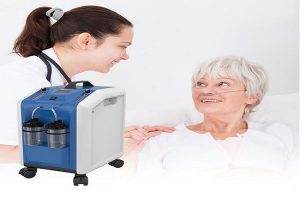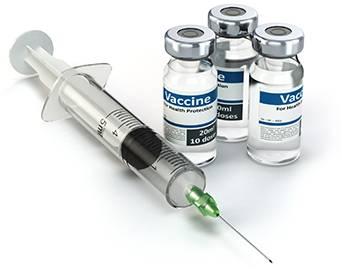
Homecare oxygen concentrators are innovative medical devices that provide patients with a continuous flow of oxygen in the comfort of their own homes. These devices are designed to help patients with respiratory conditions, such as chronic obstructive pulmonary disease (COPD), emphysema, and asthma, breathe easier and improve their quality of life.
Benefits of Homecare Oxygen Concentrators:
Homecare oxygen concentrators offer numerous benefits to patients with respiratory conditions. Some of the most notable advantages of these devices include:
- Improved quality of life: Homecare oxygen concentrators can improve a patient’s quality of life by providing them with a continuous supply of oxygen. Patients may experience less shortness of breath, fatigue, and other symptoms associated with respiratory conditions, allowing them to engage in more activities and enjoy a higher level of independence.
- Cost-effective: Homecare oxygen concentrators can be a cost-effective alternative to other oxygen delivery methods, such as compressed oxygen tanks. Patients may be able to save money on healthcare costs by using a homecare oxygen concentrator, as they eliminate the need for frequent oxygen tank refills and delivery fees.
- Convenience: Homecare oxygen concentrators are designed for use in the home, providing patients with the convenience and flexibility to receive oxygen therapy whenever and wherever they need it. Patients can enjoy the freedom to travel, visit family and friends, and participate in social activities without having to worry about their oxygen supply.
- Safer than other oxygen delivery methods: Homecare oxygen concentrators are safer than other oxygen delivery methods, such as compressed oxygen tanks. They eliminate the risk of explosions or fires associated with compressed oxygen tanks, as well as the need for frequent transportation of hazardous materials.
- Easy to use: Homecare oxygen concentrators are easy to use and require minimal maintenance. Patients simply need to plug the device into a power outlet and connect the oxygen tubing to the device and their nasal cannula or face mask.
Get Your Sample PDF Here>>> https://www.alliedmarketresearch.com/request-toc-and-sample/12391
How Homecare Oxygen Concentrators Work:
Homecare oxygen concentrators work by filtering and purifying air from the surrounding environment and delivering it to the patient as a continuous flow of oxygen. The concentrator draws in room air through a filter, which removes dust, pollen, and other airborne particles. The filtered air is then compressed and passed through a sieve bed made of a material that selectively adsorbs nitrogen molecules from the air.
As the compressed air passes through the sieve bed, it becomes enriched with oxygen and is delivered to the patient through an oxygen tubing connected to their nasal cannula or face mask. The oxygen concentrator continually monitors the purity of the oxygen being delivered and adjusts the flow rate to maintain a constant oxygen concentration.
What Patients Can Expect When Using Homecare Oxygen Concentrators
Patients who use homecare oxygen concentrators can expect to receive a continuous supply of oxygen, allowing them to breathe easier and improve their quality of life. However, there are some important considerations that patients should be aware of before using these devices.
Firstly, patients will need to work with their healthcare provider to determine the appropriate flow rate and oxygen concentration for their specific needs. The healthcare provider will also provide the patient with instructions on how to use and maintain the device, as well as how to troubleshoot any issues that may arise.
Secondly, patients will need to keep the device clean and properly maintained to ensure that it continues to function effectively. This may involve regularly changing the air filter, cleaning the device and tubing, and periodically checking for leaks or other issues.
Thirdly, patients should be aware of potential side effects associated with using homecare oxygen concentrators. While these devices are generally safe and well-tolerated, patients may experience dry or irritated nasal passages, nosebleeds, or skin irritation from the oxygen tubing. Patients should report any side effects to their healthcare provider and follow their recommendations for managing them.
Finally, patients should be aware of the power requirements for homecare oxygen concentrators. These devices require a reliable source of electricity to function, which may be a concern for patients in areas with frequent power outages or unreliable electrical grids. Patients may need to consider alternative power sources, such as backup generators or battery backups, to ensure that they have a continuous supply of oxygen in the event of a power outage.
Homecare oxygen concentrators are a valuable medical device for patients with respiratory conditions. By providing a continuous supply of oxygen in the comfort of the patient’s own home, these devices can improve patients’ quality of life, reduce healthcare costs, and provide greater flexibility and independence. However, patients should be aware of the potential side effects and maintenance requirements associated with using homecare oxygen concentrators, as well as the power requirements needed to operate the device. If you are considering using a homecare oxygen concentrator, talk to your healthcare provider to determine if it is the right option for you. With the right treatment plan and support, homecare oxygen concentrators can help you breathe easier and enjoy a better quality of life.
Contact Us:
David Correa
USA/Canada (Toll Free): +1-800-792-5285, +1-503-894-6022
help@alliedmarketresearch.com


